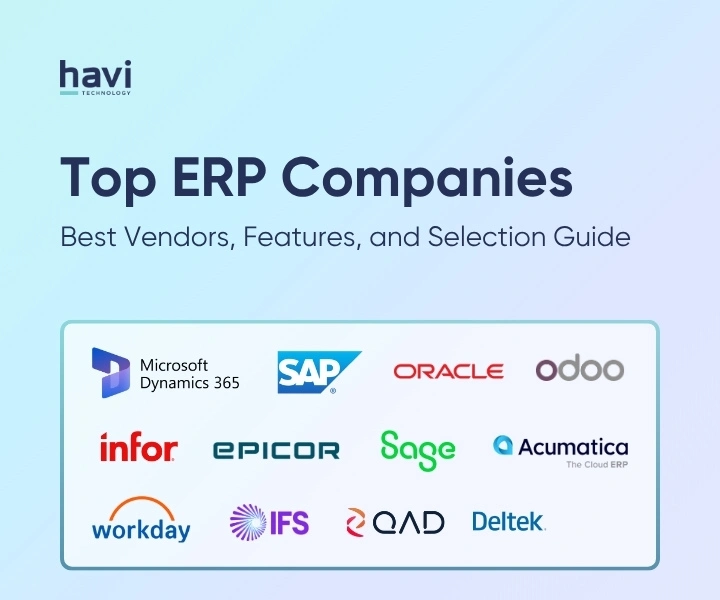TABLE OF CONTENTS
- 1. Website and Customer Experience
- 1.1. Website & eCommerce: Guided Onboarding, New Templates, Google Merchant Sync
- 1.2 Live Chat and Discuss: Expertise Routing, Chat Insights, Status Controls
- 2. Sales, CRM and Subscriptions
- 2.1 Sales: Editable Optional Products, Catalogue Sections, Portal Top-Up
- 2.2. CRM and Marketing: AI Probability, Lead Sources, Kanban Linking
- 2.3. Subscriptions: Prorated Billing, One-Time Sales, Portal Edits
- 3. Inventory, Purchase and Barcode
- 3.1. Inventory and Purchase: Packages within Packages, Forecasted Reports, Suggested Quantity to Replenish
- 3.2. Barcode: Operation Descriptions, Product Source Location, Lot and Serial Number Properties
- 4. Manufacturing, Shop Floor & Planning
- 4.1. MRP: Gantt View, Editable Deadlines, Labour-Based Valuation
- 4.2. Shop Floor & Planning: Barcode Workflows, Shift Scheduling, Routing Edits
- 5. Project, Timesheets and Services
- 5.1. Project and Timesheet: Smart Assign, Mobile Grid View, Priority Alerts
- 5.2. Field Service and Appointments: Calendar View, Technician Tracking, Mass Planning
- 6. HR, Payroll and Expenses
- 6.1. Payroll: Redesigned Engine, Payslip Correction, Unified Master Report
- 6.2. Time Off and Expenses: Odoo Master Cards, Multi-Expense Submission, Complex Duration
- 7. Accounting, Compliance and ESG
- 7.1. Accounting: Peppol Invoicing, Bank Sync, BAS Reports
- 7.2. ESG App: Scope 1–3 Emissions, CSRD Reporting, Auto Category Mapping
- 8. AI, Documents and Sign
- 8.1. AI App: Prompt Commands, Auto Field Completion, Voice and Web Search
- 8.2. Sign and Documents: Bulk Signing, Chatter Integration, Access Controls
- Odoo 19: What’s Coming For Australia?
- 1. Fully compliant Payroll AU with STP Phase 2 and SuperStream
- 2. ABA file payments, Direct Debit for wages/super
- 3. Multi-stream YTD import, backpay, and validations
- 4. 2025–26 tax rules, STSL changes, ATO security
- 5. Peppol invoicing, GST toggle, fringe benefits, BAS automation
- 6. Tyro integration
- 7. Roadmap: SBR BAS lodging, Open Banking, PEL Access, Fiduciary Program
- Odoo 19’s FAQs For Australian Teams
- 1. How should Australian businesses prepare?
- 2. How is Odoo 19 different from Odoo 18 in Australia?
- 3. How can AI in Odoo 19 be tailored for real business outcomes?
- 4. How can I try Odoo 19 or upgrade from my current version?





An ERP application is an integrated business management system that connects and automates core processes, such as finance, inventory, sales, human resources, and operations, within a unified data system.
According to the ERP Report by Panorama Consulting Group, almost 91% of companies that had used their ERP system for at least a year reported that their biggest benefit was better-optimised inventory levels.
Across Australian industries, ERP adoption has accelerated as companies seek to tackle rising operational costs, productivity gaps, and data fragmentation. For instance, a healthcare client we supported relied on more than a dozen separate systems for accounting, inventory, and payroll, creating redundant data entries and compliance risks. Consolidating these functions under one ERP system simplified reporting, reduced administrative workload, and improved decision accuracy.
In this article, you’ll learn how ERP applications manage key business functions, explore different deployment models, review leading ERP systems in 2025, and discover emerging trends shaping the future of ERP software.
Key Functions and Benefits of ERP Applications
The main function of an ERP application is to connect every part of a business into one intelligent system that centralises data, automates processes, and offers real-time insights. The image below highlights how ERP systems reshape day-to-day management into a cohesive, data-driven workflow.
These functions show that ERPs don’t merely manage data but shape how organisations operate, collaborate, and adapt to change. Next, we’ll examine the core ERP application modules that enable these benefits in finance, HR, supply chain, and beyond.
7 Core Modules Of ERP Application
The ERP system comprises seven core modules, including finance, supply chain, sales, manufacturing, human resources, project management, and business intelligence. Together, these modules form a connected ecosystem that supports financial control, efficient production, customer engagement, workforce management, and real-time performance analysis. See the illustration below for an overview of seven modules within a single ERP system.
Finance & Accounting
The Finance and Accounting module manages the entire financial lifecycle, from budgeting and journal entries to reporting and compliance. It supports multi-currency transactions, automated bank reconciliation, and real-time cash flow tracking. For Australian companies, built-in GST and BAS reporting keeps operations compliant with ATO regulations. Learn more about how ERP streamlines financial management in our guide to ERP finance.
Supply Chain Management
Supply Chain Management ensures materials and products move efficiently from suppliers to customers. It oversees stock levels, barcoding, reordering, vendor relationships, and logistics coordination. Advanced tools for forecasting, landed-cost tracking, and RFQ management help manufacturers and distributors control costs and maintain just-in-time inventory. See how integrated supply chain tools reduce delays and costs in our ERP for Supply Chain Management overview.
Sales & CRM
The Sales and CRM module connects front-end sales processes with back-end operations. It manages pipelines, quotations, orders, and after-sales service, allowing teams to deliver consistent customer experiences. By linking customer data with finance and inventory, sales teams can price accurately, forecast demand, and strengthen customer loyalty through data-driven engagement.
Manufacturing & Production
The Manufacturing and Production coordinates every stage of production to align output with demand. It manages Bills of Materials (BOMs), Material Requirements Planning (MRP), work orders, and quality checks, ensuring efficiency and consistency. Built-in traceability features help manufacturers track components and maintain compliance with ISO and industry standards.
Human Resources & Payroll
The HR and Payroll module centralises employee data and automates payroll, leave, and compliance. Functions such as STP Phase 2 reporting, expense tracking, and timesheets simplify administration while ensuring accuracy and adherence to Fair Work and ATO rules. Read how ERP transforms workforce operations in our ERP HR article.
Projects & Services
Project-based organisations rely on the Projects and Services module to plan, track, and bill work effectively. It monitors time, budgets, milestones, resource allocation, and billing status across multiple engagements. By integrating with finance and HR, it provides real-time visibility into project costs and margins, helping service-based companies make informed decisions and improve profitability.
Reporting & Business Intelligence Analytics
The Reporting and BI module transforms business data into insights that guide strategic decisions. It delivers real-time dashboards, KPI tracking, and performance analytics, allowing leaders to identify trends, measure outcomes, and forecast accurately. Many modern ERP systems also embed AI-powered analytics to automate reporting and uncover opportunities for optimisation across finance, operations, and sales.
Learn the details in our complete guide to ERP modules.
Together, these core modules create operational harmony across every department. Next, we’ll explore the ERP deployment models, including cloud, on-premises, and hybrid, and how each option impacts cost, scalability, and compliance for Australian organisations.
3 Main ERP Deployment Models: Pros & Cons
There are 3 main options to deploy a modern ERP application: on-premises, cloud-based, or hybrid scenarios that combine both ways. The illustration below highlights the three main ERP deployment models and how they differ in architecture and business impact.
Selecting the right deployment model is only the first step in ERP planning. The next decision lies in choosing the ERP software that best aligns with your organisation’s size, industry, and compliance needs. Next, we’ll explore the top ERP systems in Australia, comparing their capabilities, localisation features, and relevance to small, medium, and enterprise-level organisations.
Top Popular ERP Applications for Australia
The most widely used ERP systems in Australia, including Odoo ERP, Microsoft Dynamics 365, SAP Business One, Oracle NetSuite ERP, and MYOB Accumatica, help businesses bring every part of their operations together in one connected system. These platforms are built to simplify compliance, improve efficiency, and support growth across industries of all sizes. Below is an overview of the key features of each ERP platform trusted by Australian businesses.
Odoo ERP
Odoo ERP is an open-source, modular ERP platform widely adopted by Australian SMEs seeking flexibility and affordability. It covers finance, inventory, manufacturing, CRM, HR, and project management within a single unified interface.
Key Features:
Microsoft Dynamics 365
Microsoft Dynamics 365 combines ERP and CRM capabilities within a unified cloud ecosystem integrated with Microsoft 365 tools. It enables medium and large organisations to manage finance, operations, customers, and sales with real-time data and AI insights.
Key Features:
SAP Business One
SAP Business One is a proven ERP solution for small to medium-sized enterprises (SMEs) needing robust control over finance, manufacturing, and supply chain. Built for reliability and compliance, it provides end-to-end process visibility within a single database.
Key Features:
Oracle NetSuite ERP
Oracle NetSuite ERP is a fully cloud-based ERP platform designed for growing enterprises and multi-entity organisations. It offers unified management of finance, supply chain, and order management with real-time visibility across all business units.
Key Features:
MYOB Accumatica
MYOB Accumatica (formerly MYOB Advanced) is a cloud ERP solution localised for Australian and New Zealand businesses. It supports end-to-end management of finance, payroll, inventory, and customer service, with strong compliance and local hosting.
Key Features:
The ERP systems leading Australia’s market today share a common focus: integration, compliance, and scalability. In the next section, we’ll explore the future trends shaping ERP applications, including AI integration, modular cloud architecture, and sustainability-driven innovation that are redefining how Australian businesses operate.
The Future Of ERP Application - Emerging Technology Trends
Future ERP trends are reshaping how businesses operate by introducing AI-driven intelligence, sustainability-focused modules, and composable architectures that adapt to changing needs. These innovations are moving ERP systems' transactional tools into predictive, connected, and sustainable business platforms. Below is some of the latest technologies that you can consider to improve your ERP and get a competitive advantage.
Understanding these emerging ERP trends helps businesses make informed choices about technology adoption and system design. Next, we’ll address common FAQs and expert insights on ERP applications, offering practical guidance for Australian organisations evaluating ERP readiness, deployment options, and success factors for implementation.
ERP Application - Frequently Asked Questions
1. Is ERP software suitable for small businesses?
Yes, ERP software is suitable for small businesses, especially those looking to scale. Many ERP vendors, like Odoo or MYOB, offer affordable, modular solutions that allow small businesses to start with basic functionalities and expand as they grow. Explore top 5 ERP software for small businesses in Australia.
2. Is Xero an ERP?
No, Xero is primarily a cloud-based accounting software designed for small to medium-sized businesses. However, Xero can integrate with ERP systems, such as Odoo, to offer a seamless flow of financial data and extend its capabilities. For more on how Odoo integrates with Xero, check out Odoo and Xero integration.
3. How long does it take to implement an ERP system?
The time required to implement an ERP system varies depending on the complexity and scale of the business. For small businesses, implementation can take as little as 3 to 6 months, while larger companies may need 6 to 12 months to fully deploy and integrate an ERP solution.
In conclusion, an ERP application brings together every part of a business, from finance and inventory to people and production, into a single connected system. For companies in Australia and New Zealand, choosing the right ERP is a step toward transforming how your business runs. Ready to see how ERP can streamline operations and drive growth? Consult with our team to find the solution tailored to your industry, your team, and your future.
Article Sources
Havi Technology requires writers to use primary sources to support their work. These include white papers, government data, original reporting, and interviews with industry experts. We also reference original research from other reputable publishers where appropriate. You can learn more about the standards we follow in producing accurate, unbiased content in our AI Content Policy: